
Cold Air, Bright Stars, Can’t Lose: Why Winter’s Best for Stargazing
You might be tempted to stay in by the fire this January and February. Here’s why you should spend your evenings outside instead.
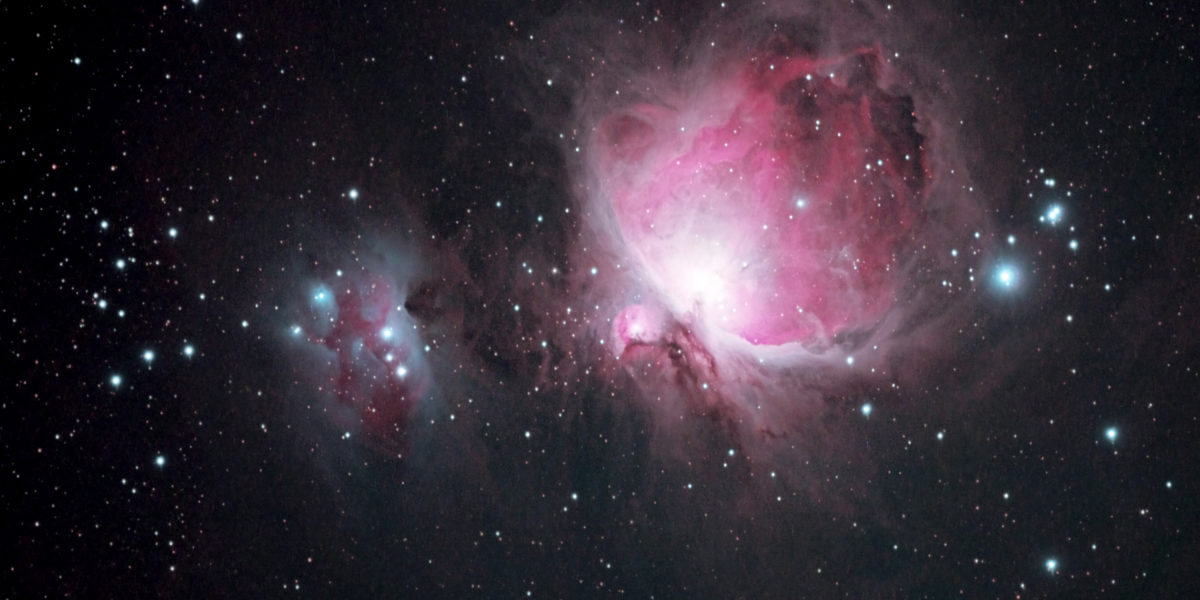
Orion Nebula. Photo by Pat Gaines/Getty Images
Winter—it’s the best of times and the worst of times, if you’re a stargazer.
It’s the worst for an obvious reason: It’s cold. And in much of the West, Mother Nature serves up her winter weather wet, with a side of mud, making it tempting to stay inside until spring.
But if you can muster up the courage (and the gear) to get outside during the winter, the reward is some of the best stargazing of the year.
The very fact that it’s cold is part of what makes this such a good season to be looking up. Cold air holds less hazy moisture than balmy summer air, so clear nights tend to be very clear indeed. Long nights help, too—the skies get fully dark long before the kids’ bedtime, so the whole family can enjoy the night sky together. Also, prime sky-viewing locations like state or national parks are fairly deserted during the winter, which makes planning a stargazing adventure much easier.
But mostly the good conditions are down to pure luck—it just so happens that winter months are when some of the coolest things are high in the sky. Here is a guide to a few dramatic objects that are always visible in the evening sky during the winter months.
In most cases, these objects can be appreciated with the naked eye, but if you have a pair of binoculars, even ones marketed for daytime activities like sports or birding, bring them along. You’ll be amazed at the details that will pop with just modest magnification. We’ve made a few recommendations for things to look at with telescopes. All can be seen with a small instrument, one with a lens or mirror 3 or 4 inches in diameter.
Orion
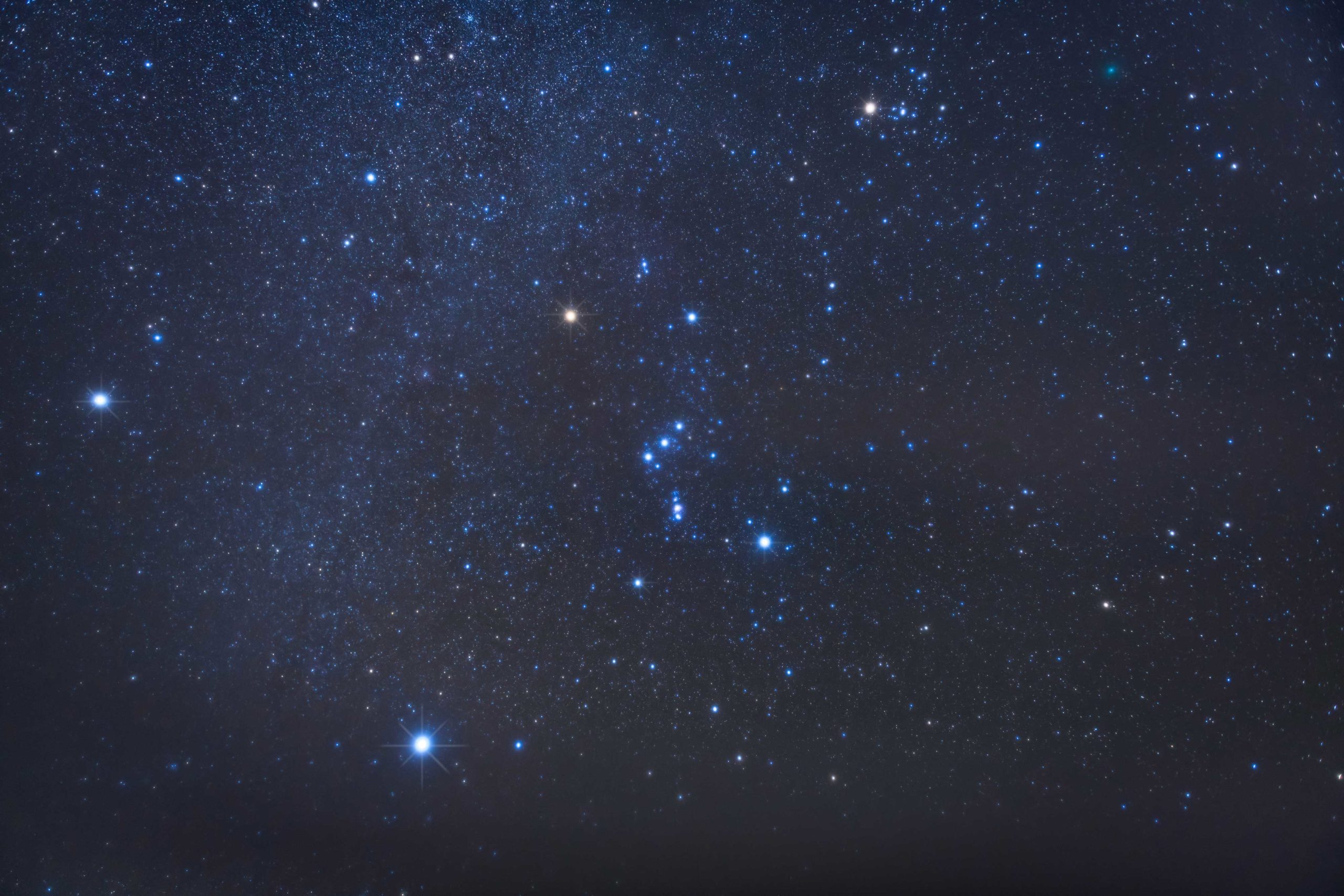
wenbin/Getty Images
One of the most recognizable constellations hangs high in the sky during winter. While most constellations are composed of unremarkable stars and take a lot of imagination to appreciate, Orion is bright and does suggest a hunter. Four prominent stars form a rectangle, and it’s not hard to see them as representing his shoulders and feet. Take a good look at Betelgeuse, the top left one—it’s noticeably red in color. It’s a supergiant star near the end of its life that’s expected to turn into a supernova in the next 100,000 years or so. Or maybe tonight. You never know so keep an eye on it.
If you have a telescope: Three tightly spaced stars appear to hang below and roughly perpendicular to Orion’s iconic belt. Train a telescope on the middle one and you’ll realize it’s not a star at all. It’s the Orion Nebula (pictured at top), a spectacular cloud of gas and infant stars.
Sirius
Follow the line of Orion’s belt down and the left, and you can’t miss Sirius, the brightest star in the night sky. It’s known as the dog star because it’s in the constellation Canis Major, the big dog. When it’s on the horizon at dawn on hot summer mornings, it heralds the dog days of August, but when it’s high in the evening sky, you know it’s winter.
Cassiopeia
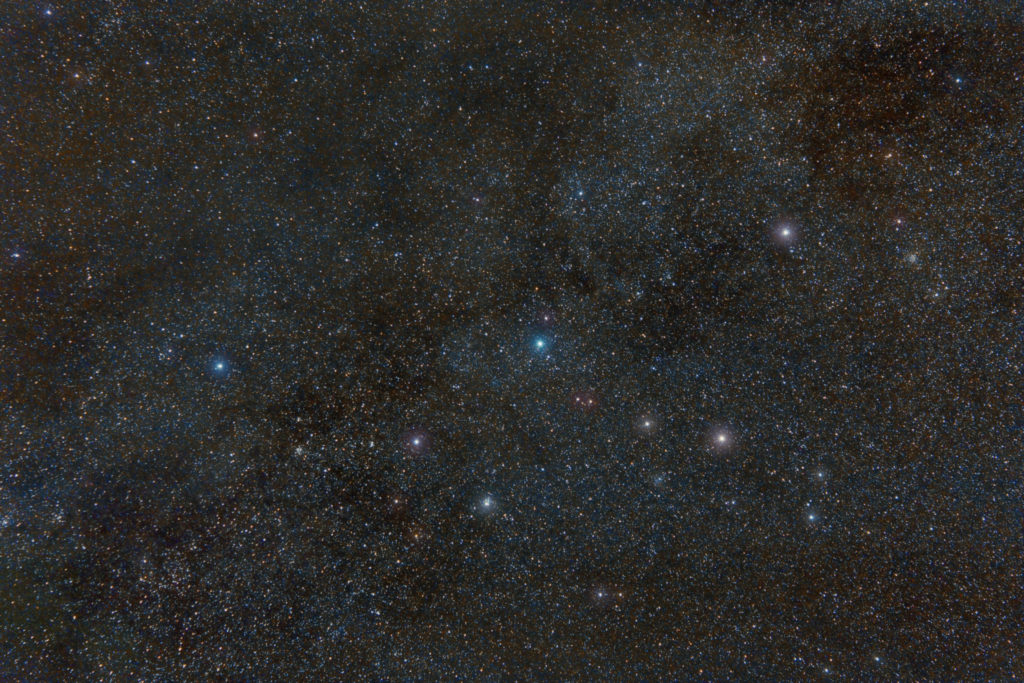
David Docil/Unsplash
The bright constellation Cassiopeia may not look much like the queen it’s named after, but its striking “W” shape (actually more of an “M” at this time of year) is attention-grabbing.
If you have a telescope: The Milky Way runs through Cassiopeia and this part of the sky is dense with nebulae and elegant star clusters.
Taurus
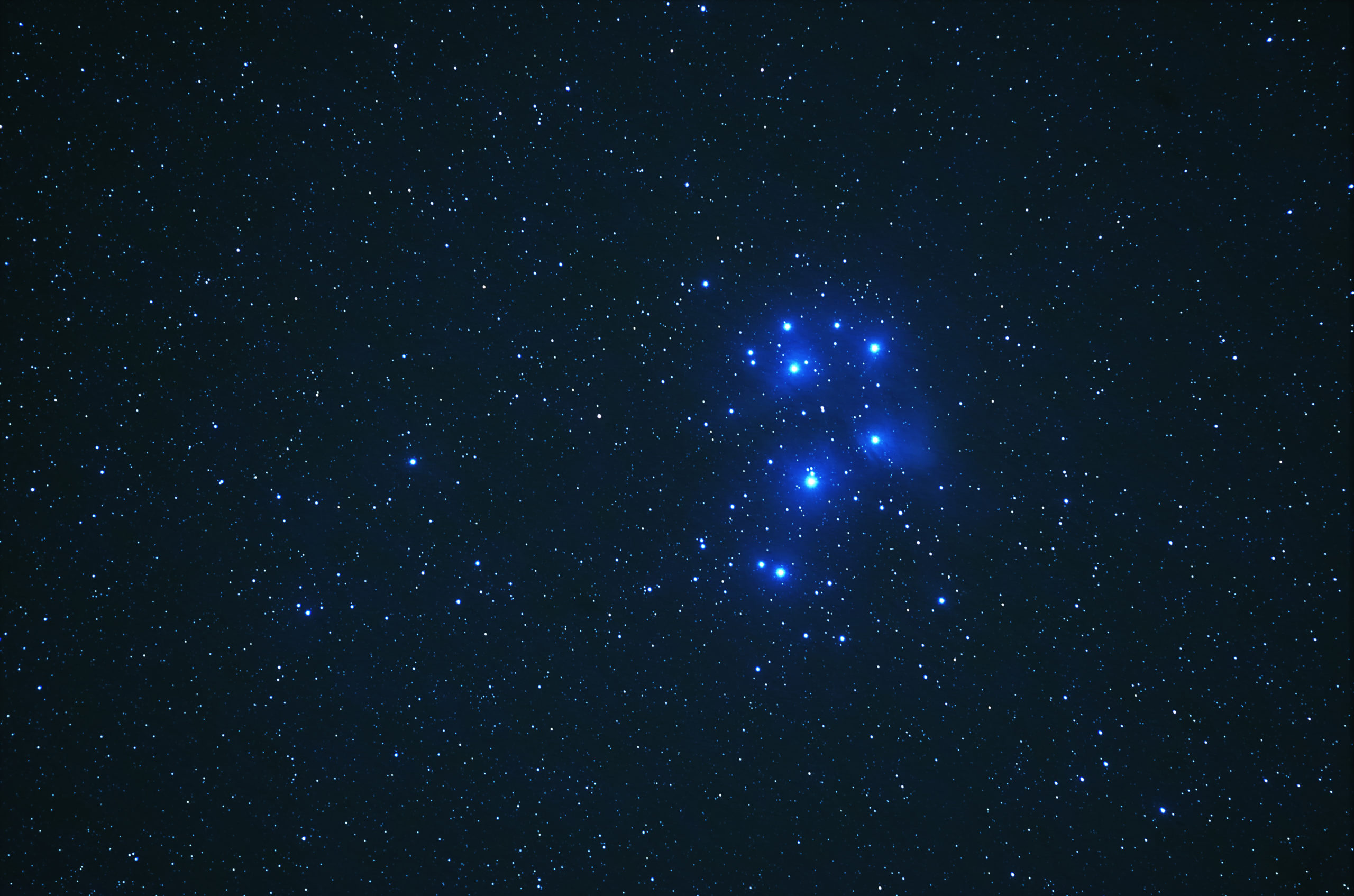
Haitong Yu/Getty Images
The arrangement of stars that makes up the constellation Taurus the bull is not especially impressive (and almost not at all bull-like), but this part of the sky is home to the Pleiades, the easily recognizable dipper-shaped star cluster, and it is at its highest point in the sky during the winter. (Fun fact: This cluster is called “Subaru” in Japanese. Now you know why the car-maker’s logo has stars in it.)
If you have a telescope: First turn it toward the Pleiades, and the cluster of 5–7 stars visible to the naked eye most nights will reveal itself to be composed of dozens if not hundreds of stars. Then pan over to the Crab Nebula, a red and green cloud of gas that is the remnant of a star that exploded in the year 1054.
Andromeda Galaxy

Bryan Goff/Unsplash
In the otherwise unremarkable constellation of Andromeda lies the Andromeda Galaxy. Entirely separate from our own Milky Way, the Andromeda Galaxy is 2.5 million light years away, and is the most distant thing a person on earth can see without a telescope. If skies are dark, you should be able to see the fuzzy smudge that is the galaxy—it covers a patch of sky bigger than a full moon, but not nearly that bright.
If you have a telescope: By all means, use it. It doesn’t take a very big instrument to discern the extra-bright center of the galaxy, dark lanes between the spiral arms, and even two small companion galaxies that appear nearby.
Meteor Showers
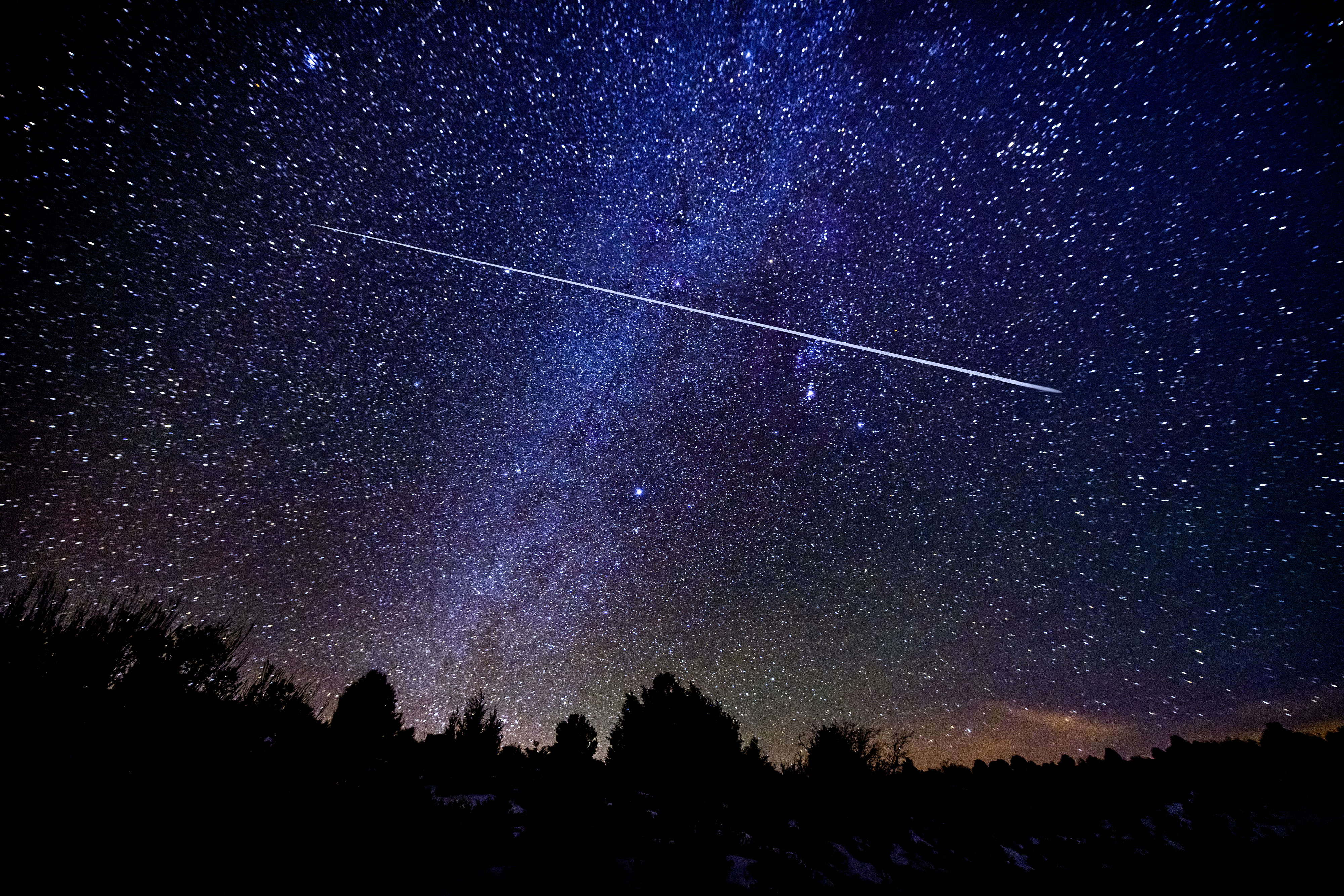
Adventure_Photo/Getty Images
Shooting stars can happen any night of the year, but this winter your best bet is early to mid-January. That’s when the annual Quadrantids meteor shower occurs. If you’re lucky, you’ll be able to see up to 40 meteors per hour. The peak will happen this year the night of Jan. 3-4, but you’ll still see an above-average number of shooting stars until about Jan. 15.
If you have a telescope: Leave it at home. Meteors can appear anywhere in the sky, so you don’t want to limit your field of view.
Northern Lights
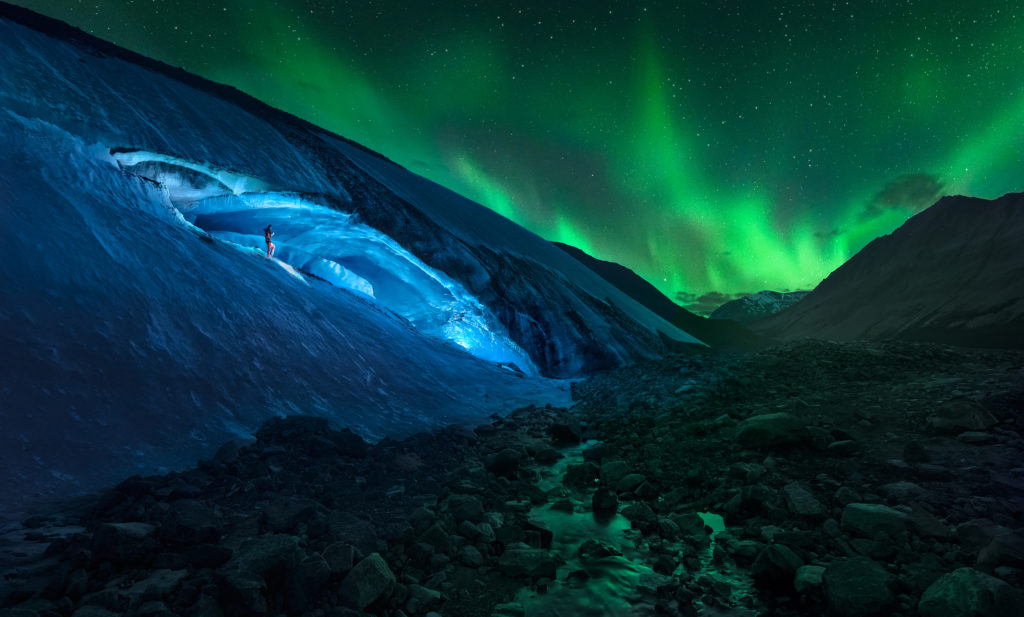
Jesús M. García/Getty Images
The northern lights (a.k.a. the aurora borealis) are not seasonal; they can flare up at any time. Long, dark winter nights are when you have the best chance to see them, though. It’s unusual to see the northern lights in the continental United States, but it does happen. We rounded up the best places to see the northern lights, but you should also check websites like the Aurora Forecast at the University of Alaska to find out when conditions are good for a light show.
Applicable Apps
An app, preferably one with AR capabilities, can make it extremely easy to find objects in the sky—and also to answer any “what’s that?” questions you have as you’re looking up. SkyView shows what planets, constellations, and even satellites are visible in real time. It’s available for both Android and iOS. Night Sky is a Sunset favorite, although it’s only for iOS.
Don’t spend too long staring at your phone out there, though. For one thing, you went outside to commune with nature, not to fall down a TikTok rabbit hole. Also, the bright screen will temporarily dim your night vision, making it harder to see fainter objects.
Read the Current Issue Here!
Get one year of Sunset—and all kinds of bonuses—for just $29.95. Subscribe now!
